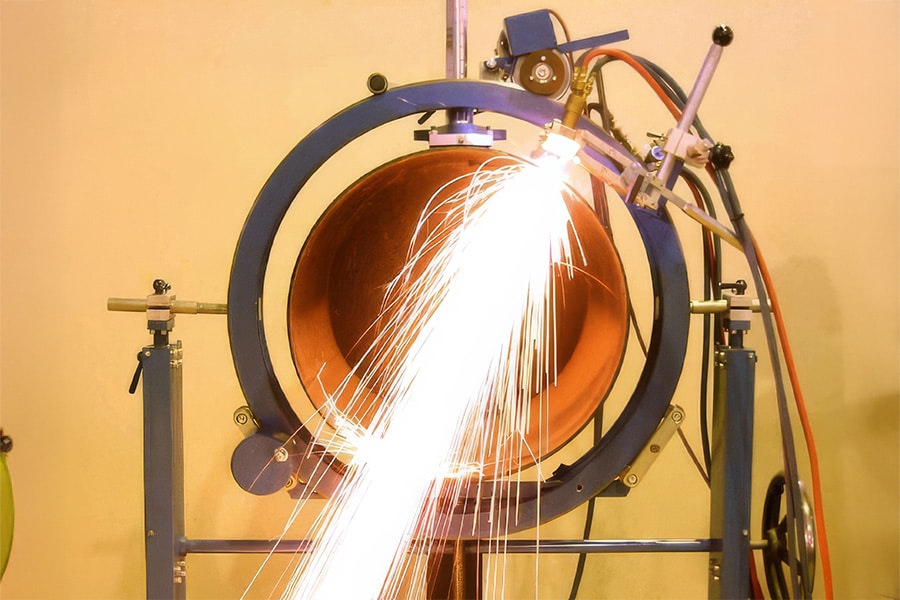
Here's how to make your workplace layout more efficient
How machines are arranged in a workshop is usually the result of natural growth. Still, it might be good to think about whether you're getting the best possible flow with your current setup. After all, the more predictable your pieces move through the workshop, the more reliable your delivery times will be as well. In other words, efficient production starts with an efficient layout.
No metalworker escapes it. At some point, it will be necessary to review the layout of all the machines on the shop floor and in the warehouse. A chore that most company managers look up to, but one that practice shows can greatly improve efficiency. Provided it is thoroughly thought through. Sophisticated planning and flexibility are the keywords here.
The first question to ask yourself is: why tinker with the layout? What do you want to achieve and what do you just want to avoid? It is important to weigh the efficiency of a layout today against what the long-term effect will be. Those who succeed will see bottlenecks on the shop floor disappear and be able to continue growing in a stable way.

Seeing is believing
A general tip we can give to everyone is to take a look at colleagues in the neighborhood. What works well for them and how can you fit those ideas into your own plans? To know where you are going wrong, just follow a product through each step on the production floor. If this results in a diagram that looks like spaghetti, you have a problem.
While you're at it, you can also take a look at how materials are used on the shop floor, and what a logical route would be. After all, if you want to get the flow right, you have to look at the entire process.
And a third aspect to consider: how are tools used? If your employees have to cross the entire workshop to find a tool, that's a waste of time. Tools should be located close to where they are needed. Open or glass cabinets with clearly labeled items assure that even employees who are not yet completely familiar with the way things are done will quickly find what they are looking for.

Bigger is not always better
With each expansion, challenges come your way. The more space is available, the more machines and tools remain that you don't actually use anymore. Once that equipment is gone, by the way, it is much easier to draw out an efficient flow. Not necessarily by leaving more space between all the machines, because that in turn can lead to more distance traveled, more strain and more time lost between tasks. A much better approach then, for example, is to see if everything fits in one line as straight as possible for a logical flow between all processes. That, by the way, can lead to new insights to look at the next machine investment to see what really fits best there.

Flexibility
The layout you have today is not necessarily the one you will need tomorrow. Even with a detailed future plan in mind, you'll discover that there are still some changes to be made. As you prepare everything for a major makeover, think about infrastructure as well. Make sure there are power supplies in enough places, for example. Then, if you do want to change a machine's location later, you won't have to bring up extension cords. That's called creating flexibility.
In doing so, also keep in mind the different types of pieces that pass. The first priority in layout should go to the core tasks that need to be done daily. Only then look at operations that do recur but only a few times a month.
Need to do things that are even rarer, can't finding a good supplier add value to save on space, material and machinery?

Investing in new technology
Whoever renews his machines should also take a close look at his infrastructure. Will overhead cranes still suffice to support handling, for example? Or aren't there more innovative ways to optimize certain tasks? As interesting as new technology can be, there is also a pitfall. After all, innovating for the sake of innovating makes no sense. Unless technology can help reduce workloads or anticipate future growth, the money might be better invested in something else.

Take your time
Finally, it is important to take sufficient time when reworking a layout. Involve all stakeholders, including the operators on the shop floor. After all, they will have to work in it and they usually have the best insights to achieve a more efficient flow. There is no one-size-fits-all solution in terms of workshop design. It all depends on your production and processes and the challenges and needs it brings. So it's good to think twice and measure twice before setting the whole thing up. But keep in mind anyway that a layout will never be permanent.



